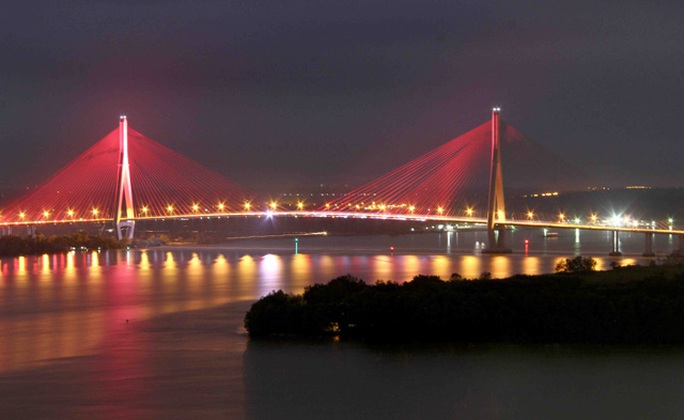by Tran Huu Hiep
Saigon Investment Thứ Tư, 2/2/2022 06:00
(SGI) - The National Assembly has just
passed a Resolution to pilot a number of specific plans and policies for the
development of Can Tho city.
Illustrative photo.
These
new policies will help in drawing in more investors, and it is important to
implement them as early as possible so as to build up adequate resources.
Inter-regional
development
Can
Tho city is in an urban area which comes directly under the Central Government
and falls under Grade I category. Can Tho has the characteristics of a multi-functional
center, with several attractive features that can link it to further
development in localities in the Mekong Delta region. Together with Ho Chi Minh
City, this urban area can create an inter-regional development space and at the
same time be the gateway to the East Sea for the Mekong sub-region.
The
Mekong Delta region plays a central role in supporting Can Tho City in the
development of many fields such as the main economy, banking, trade, tourism,
science and technology, education and training, specialized healthcare, and can
also become a key hub for transportation with connectivity to many parts of the
Mekong Delta region. However, the economic, social, and functional
infrastructure of a large city are not evident here. There needs to be more
effort made towards planning and management, especially urban planning, which
has many shortcomings. There has to be a major breakthrough to make Can Tho a
driving force for the development of the entire Mekong Delta region.
In
order to create a breakthrough for development, there has to be strong
motivation and a large amount of resources. This is why the National Assembly
passed the Resolution for piloting specific mechanisms and policies for Can Tho
city, so that bottlenecks can be removed and an impetus created for
development.
New
resources can be created when the city is able to actively issue local
government bonds, borrow from financial institutions and other domestic
organizations, and can also borrow from the Government's foreign loans, with
the total outstanding balance not exceeding 60% of the city's budget revenues.
Annually, the additional central budget targets the city with no more than 70%
of the increase in distributed revenues. Can Tho is also allowed to apply
authorized mechanisms, decentralize decisions related to fees, charges, while
the city budget can enjoy 100% of additional revenues as well.
Some
other bottlenecks have also removed, paving the way for Can Tho city to develop
in the right direction. These are regulations related to land, planning and
management, and income policy of cadres and civil servants according to work
performance with an increase of up to 0.8 times the salary level, position, or
salary according to job position. There are also new incentives and incentive
mechanisms and policies for dredging projects combined with product recovery of
Dinh An maritime channels. Besides this there is the establishment of a center
for the association, production, processing, and consumption of agricultural
products approved by the National Assembly, which has an important significance
for Can Tho city, but it will also promote and support the development of all
localities in the Mekong Delta region.
Delegate
responsibility
Investment
attracting policies are basically decentralized and delegated to local
governments. What Can Tho city needs now is the ability to balance public investment
resources and strongly mobilize the whole society based on local practical
capacity and capabilities. The pilot mechanism can create new resources, but
whether or not the resource is actually created depends on the efficiency of
implementation. This requires organizing the apparatus of Can Tho city under
the effectiveness of the city government. The strengthening of regional links
to attract resources needs the consensus of the people and the business
community.
As a
result of the implementation of the land-use master plan and plan of Can Tho
city, in the period 2011 until 2020, only 802 hectares have been converted out
of a total of 3,825 hectares of the total area of rice land. This shows
bottlenecks in procedures and also reveals gaps in implementation compared to
planned targets. Weaknesses in planning and management, especially in urban
planning, have been evident in recent times. The slow implementation of key
projects need to be overcome. When the city is given greater authority, more
opportunities will open, and there will be higher demands and more serious
responsibilities.
It is
necessary to draw lessons in responsibility from the dredging of the Dinh An
channel for large ships to enter the Hau River, as well as investing in the
construction of regional agricultural wholesale markets such as the rice market
in Can Tho and the fruit market in Tien Giang with old and ineffective methods.
New mechanisms and policies are needed, but more important is effective
enforcement so as not to repeat the same mistakes all over again.
New
policy mechanisms, as well as having a Center for linking, producing,
processing, and consuming agricultural products, will not solve all problems.
It only focuses on solving important stages of mechanisms and policies. This
center is located in Can Tho but has to cover the whole Mekong Delta region, so
it is necessary to promote the economic space with intra-regional connections
to other regions in the country. Building the center should be associated with
lessons about solving market problems, and reviewing the planning in accordance
with new mechanisms. How to effectively apply mechanisms and policies, build
and promote the effectiveness of the center is an opportunity but also a
challenge and a great responsibility for Can Tho city.
Can
Tho City has shown strong political determination, whether or not it can be
achieved depends on using the full operational efficiency of the political
system and mobilizing businesses, investors, and citizens to participate in its
goal towards becoming a highly developed regional center of the country.
Dr.
Tran Huu Hiep

Nhận xét
Đăng nhận xét